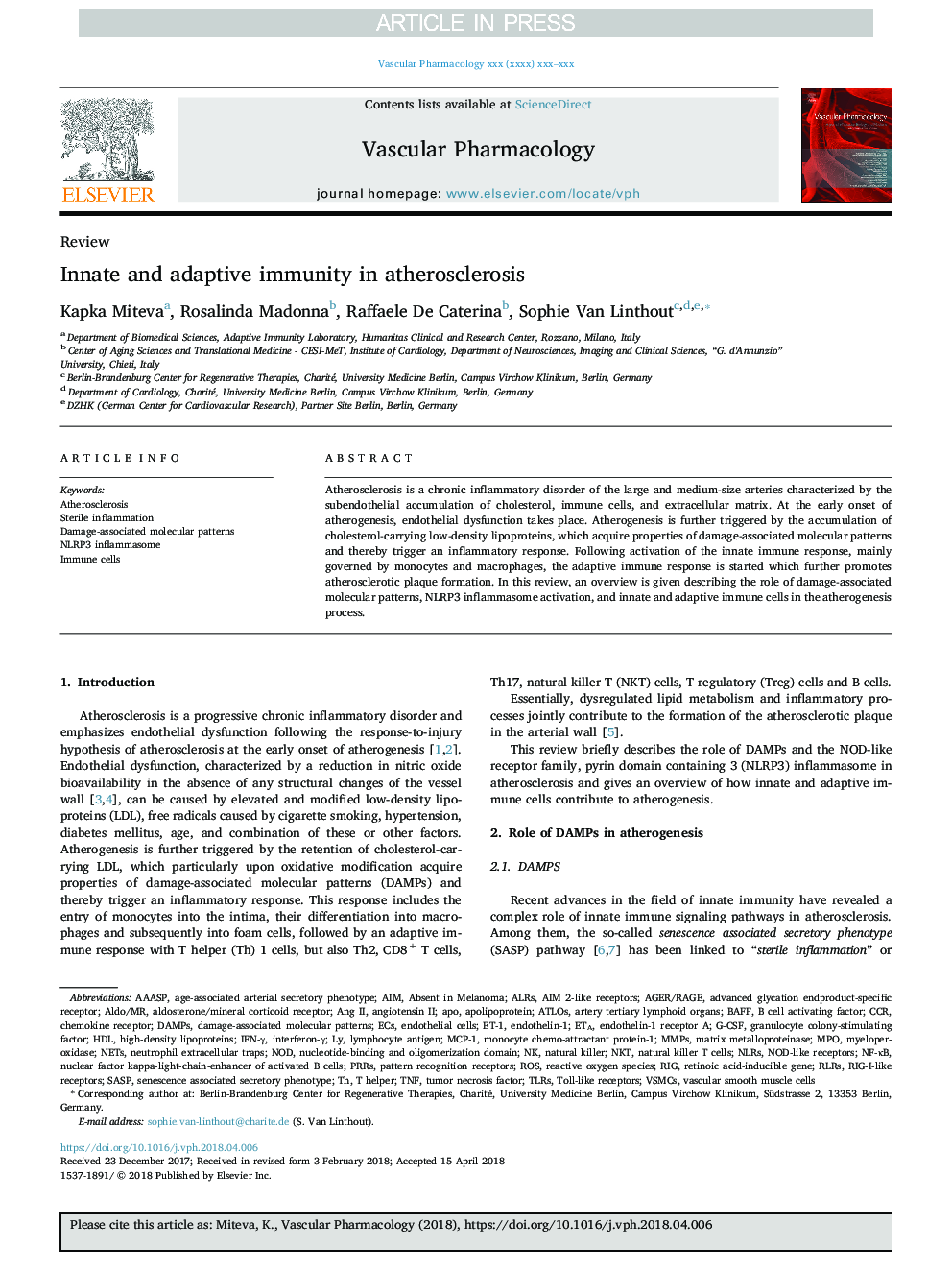| Article ID | Journal | Published Year | Pages | File Type |
|---|---|---|---|---|
| 8540415 | Vascular Pharmacology | 2018 | 11 Pages |
Abstract
Atherosclerosis is a chronic inflammatory disorder of the large and medium-size arteries characterized by the subendothelial accumulation of cholesterol, immune cells, and extracellular matrix. At the early onset of atherogenesis, endothelial dysfunction takes place. Atherogenesis is further triggered by the accumulation of cholesterol-carrying low-density lipoproteins, which acquire properties of damage-associated molecular patterns and thereby trigger an inflammatory response. Following activation of the innate immune response, mainly governed by monocytes and macrophages, the adaptive immune response is started which further promotes atherosclerotic plaque formation. In this review, an overview is given describing the role of damage-associated molecular patterns, NLRP3 inflammasome activation, and innate and adaptive immune cells in the atherogenesis process.283
Keywords
NF-κBnucleotide-binding and oligomerization domainTNFNLRsRLRsALRsETAVSMCsT helperSASPRIGNKTPRRsET-1IFN-γMCP-1CCRDAMPsMmpsHDLNODnatural killerMPOECsNETsROSTLRsAtherosclerosisAngiotensin IIapoapolipoproteinNLRP3 inflammasomesterile inflammationdamage-associated molecular patternsendothelin-1interferon-γBAFFneutrophil extracellular trapsAng IInatural killer T cellsImmune cellsVascular smooth muscle cellsEndothelial cellsB cell activating factorgranulocyte colony-stimulating factorG-CSFtumor necrosis factornuclear factor kappa-light-chain-enhancer of activated B cellsSenescence associated secretory phenotypeHigh-density lipoproteinsmatrix metalloproteinasemyeloperoxidaseAIMabsent in melanomamonocyte chemo-attractant protein-1retinoic acid-inducible geneReactive oxygen specieschemokine receptorNOD-like receptorspattern recognition receptorsToll-like receptorsRIG-I-like receptors
Related Topics
Health Sciences
Medicine and Dentistry
Cardiology and Cardiovascular Medicine
Authors
Kapka Miteva, Rosalinda Madonna, Raffaele De Caterina, Sophie Van Linthout,
